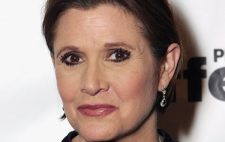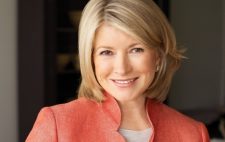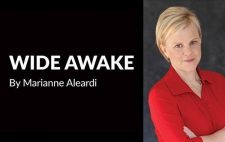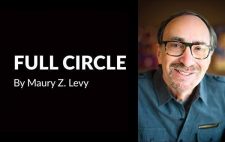There was a time not long ago when visiting a female doctor was unheard of. Women didn’t go to medical school, and they certainly didn’t treat patients. But today no one looks twice at a woman in a white coat. It’s commonplace. And there are a few smart, confident – and persistent – women to thank for that. These SJ trailblazers changed the rules in what was once the male-dominated world of medicine.
Leah Zoole could not believe the words coming out of the University of Pennsylvania School of Medicine admissions officer.
She had made her decision to be a doctor at age 16. Student loans were just coming into being when she began her medical school studies in 1958, but she had the tuition money from an uncle and a physics professor who believed in her.
Her stellar grades at Temple University, her bachelor’s degree in physics, and her love of science and math had all led to this moment. Her GPA was so fantastic she was in the top 10 percent of her undergraduate class. Temple’s Medical School didn’t even want an interview, they just wanted her to join its rolls.
The Penn admissions officer was having none of that.
“The interviewer told me, ‘You’re going to get married, so why don’t you go to Temple?’” the now-Dr. Leah Ziskin says. “You can’t say that today.”
It wasn’t her first brush with a patronizing, even angry, attitude from those around her.
“My parents were supportive, but in college, especially the young men, they would say, ‘Why are you doing this? You’re going to take our place. You’re not going to use your education.’ I let it roll off because, in the next breath, they’d ask, ‘Did you do the math homework? Can you help me with this problem?’
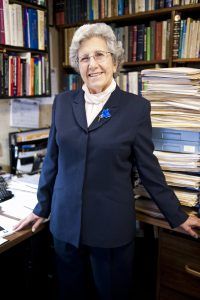
Dr. Leah Ziskin at her home in Cherry Hill
“In school, I was as good as the boys and I could do the work, so I let what they said roll off me,” says Ziskin, who retired in 1999 as the deputy commissioner of the New Jersey Department of Health and Senior Services.
Confidence and grit mark all trailblazers, none more so than the women who wanted to dedicate their lives to medicine. The road to the OR and ER has been littered with snarky comments, “no girls allowed” signs and personal sacrifice. Pushing past it all, today’s medical providers are filling roles once held only by men and creating new ones in the name of patient care.
Oddly and arguably, one of the places where pushback was held at bay was in medical schools. Once women put on the white coat, their gender all but vanished to their fellow students. Instructors were a different story.
“Some of the faculty had sexist slides with lectures that were clearly not updated. There were insulting jokes,” says Carolyn Bekes, MD, who was Cooper University Hospital’s Chief Medical Officer from 2009-2012.
The 1972 Jefferson Medical College graduate had issues not just with what went on in the building, but the building itself. The locker rooms, call rooms where doctors rested before and after shifts, and bathrooms were tailored to the dominant gender.
“In obstetrics, the call room was on the floor where the babies were delivered. It was only for men. My call room was so far away that when they called I would miss the delivery,” says the critical care specialist who was Cooper’s intensive care unit director for 16 years. “I didn’t take it personally, nor did I let it get in my way.”
The thousands of women who came before Bekes thought the same way, says Rutgers history professor Margaret Marsh. “Women have been healers for a long time, becoming doctors in medical schools in the middle of the 19th century.”
Elizabeth Blackwell, the first woman to earn a medical degree in the United States, fought to get into Geneva Medical College after being rejected by 29 other schools. Her admission was put to a vote. Whatever the motives of the 150 men in the student body, the decision was to let her in. She graduated in 1849.
From then on, the numbers swelled. In 1880, women made up less than 3 percent of the 86,000 doctors in the country, Marsh says. By 1910, it was 6 percent. Then the rules changed.
“Medicine was not professionalized like today. When it became more professionalized, it became more expensive to have a school,” Marsh says. “They started pushing women out. I don’t know if medicine became more scientific to exclude women.”
Medical schools became attached to universities, credentialing became harder as apprenticeships were frowned upon and a college degree was needed for admittance. There would be a World War and decades to go before there was anything close to a surge.
“When the number of female students began to rise in the 1970s, it was because of the feminist movement. It was because the schools were sued for discrimination,” says Marsh. “It’s not until the 1980s that you see it rise again. One of the reasons why was that women wanted to go to women doctors.”
Ziskin, who was the associate dean of the University of Medicine & Dentistry of New Jersey for three years, was at the forefront. Bekes was part of the second wave. Her job – making the rules at Cooper’s ICU – was almost unthinkable when Ziskin graduated just a decade earlier.
“I had to build the practice to convince other physicians that they needed us,” says Bekes, who was the first female president of the Society of Critical Care Medicine. “I came to realize if I wanted the ICU to be what I wanted it to be, I had to get involved with the policy and administrative organizations.
“In those first administrative roles, I was the only woman,” she says. “I noticed it, but it didn’t matter to me.”
Whether it was her age or her gender, Bekes was aware some senior doctors had trouble relating to her authoritative role. She never took her exclusion from the chats held on golf courses or in men’s changing rooms personally. She merely looked at it as the price a person pays for being first. They get the job of transforming the way things are done.
“I didn’t realize I was breaking ground. It was always what I thought needed to get done,” she says. “That just happened to be the result.”
The rules, once used to keep women out of medicine, were now being made by women. But there were still hills to climb.
Laura Ross, DO, is distinctive on two fronts: She owns her own practice and is an orthopedic surgeon.
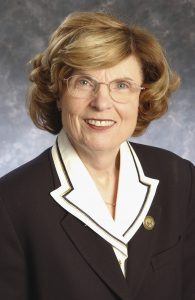 “Orthopedics and neurosurgery are the last bastions of male-dominated medicine,” says Ross. “In the late ’80s, there were not a lot of women choosing this. I didn’t know of any female orthopedic surgeons.”
“Orthopedics and neurosurgery are the last bastions of male-dominated medicine,” says Ross. “In the late ’80s, there were not a lot of women choosing this. I didn’t know of any female orthopedic surgeons.”
She found a mentor in Dr. Ann Babbitt, a doctor 20 years her senior who had much to impart. Babbitt, though, wasn’t the only one watching the outcome.
“When I trained in the program, I was the first female to go through. All the trainers were interested in graduating a female from the program,” Ross says. “I was treated well, but I still had to prove myself that first year.”
Ross joined a big club when she graduated The University of Health Sciences/College of Osteopathic Medicine in 1991. Seventeen percent of doctors were women in 1990, according to the American Medical Association. By 2009, the number had almost doubled. The next phase of advancement for women could be starting their own practices, something Ross did in 2006.
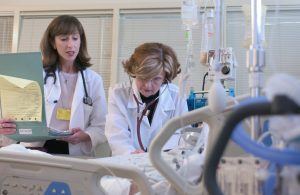
Critical care specialist Dr. Carolyn Bekes served as the Chief Medical Officer at Cooper University Health Care from 2009-2012
“I wanted total autonomy, to make my own hours, be able to work at my own pace. I wanted to make the practice what I wanted,” she says. “The group I was with was well managed. I took that with me. Now that I’m a solo practitioner, I’ve got my own flavor.”
Word-of-mouth spread quickly that a woman doctor had hung up a shingle. Her patient list grew to 45 appointments a day, or up to six surgeries. Being a woman enhanced her appeal, she says.
“I’ve used being a female in my marketing,” Ross says. “Some patients see it as extra nurturing in addition to expertise. There is a female nurse practitioner in the practice. People seek us out because we are women. People have the perception that women sit longer with you, talk longer, that we have that nurturing aspect.”
Nurse practitioner Kelly Gambino joined Ross last year. The concept of nurse practitioners developed in the mid-1960s to combat the doctor shortage. Their duties, as well as their popularity, have been evolving ever since.
“We are all over the place now. It can get as specialized as you want or as broad as primary care,” says Gambino, who has been a nurse practioner for 20 years. “I can’t think of any specialty we haven’t done – pain management, urology, psychiatry. The role has always been out there, but now we are getting our props, so to speak. It’s in the numbers. It’s a big voice.”
In 2010 there were 135,000 nurse practitioners, estimates the American Academy of Nurse Practitioners. There has been a steady increase since the organization posted its first numbers – then just 20,000 – in 1980. Gambino, like Ross, sees her own patients, has office hours, writes prescriptions and administers cortisone shots.
“The only thing I don’t do is hold the knife,” she says. “When we’ve failed with conservative therapy, if we’ve exhausted that, I talk to Dr. Ross.”
Gambino shares more than her days with the good doctor. Both sought out their current paths because it afforded them more choices in terms of their careers and personal lives.
“Being a nurse practitioner opened the door to anything I wanted to specialize in,” says Gambino, who was the first nurse practitioner at Jefferson University Hospital. “I wanted more autonomy.”
“I start out at about 7 or 8 in the morning, and I’m home in time for dinner,” Ross says. “I don’t take a lot of emergency calls and on the weekends I do paperwork. Saturdays, I try to do something with the kids or read. I have friends. I’m in a book club. I see movies.”
“Now there are female doctors doing it all,” Gambino adds. “They are having families, being a doctor, hiking Mount Kilimanjaro.”
Much has changed since the day Harriot Kezia Hunt got her first rejection letter from Harvard Medical School in 1847. Hunt, who became an advocate for a woman’s right to practice medicine, probably would not be surprised to see women wielding the scalpels or owning their own practices. Ziskin isn’t surprised at all.
“There were about 10 women in my class of 200 at medical school. There were enough of us,” she says. “I’ve kept in touch with five of them. One is a nephrologist, one is an ob/gyn, two became psychiatrists, and one is a pediatric ophthalmologist. I specialized in public health and preventative medicine. We didn’t waste our educations as the boys predicted.”



